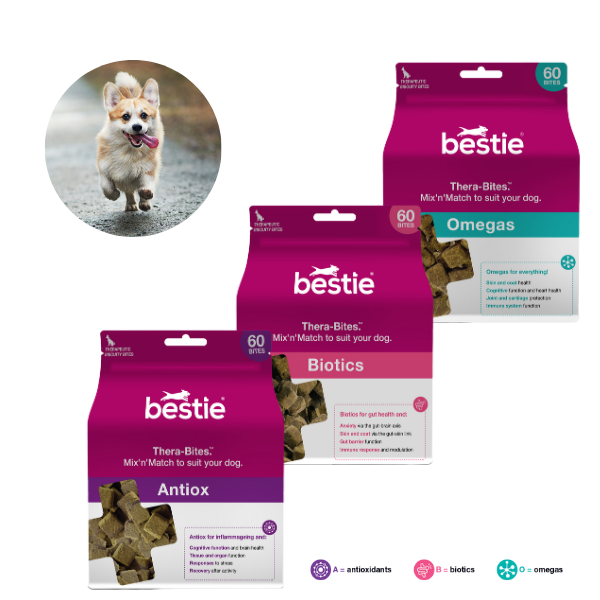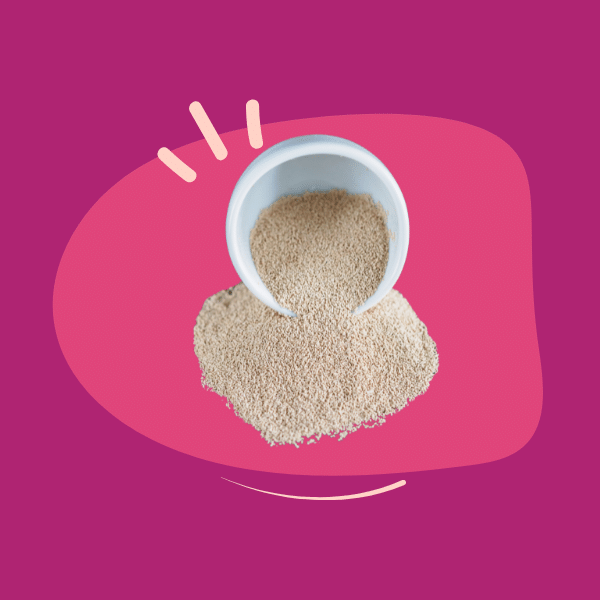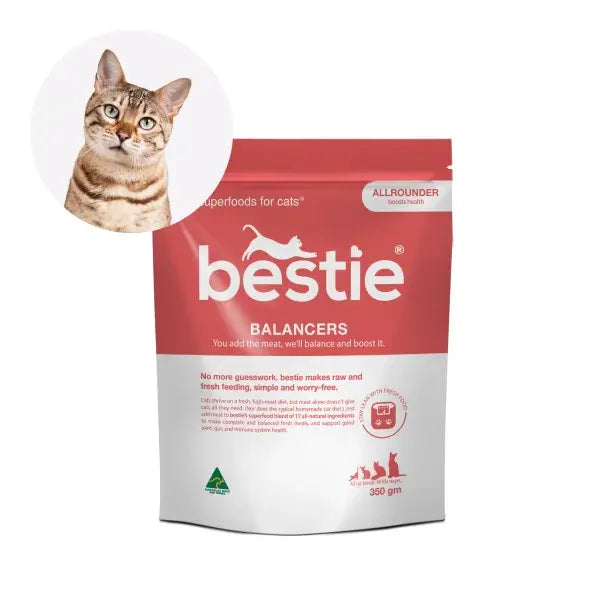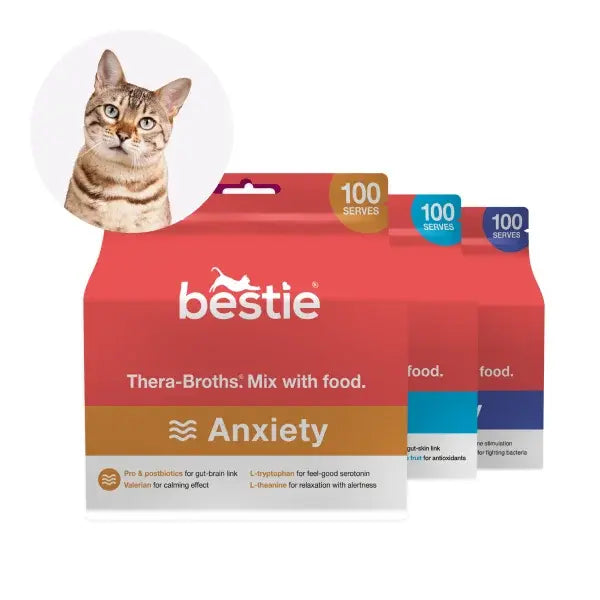In this episode of The Pet Nutrition Show, Dr. Anna shares insights from a recent clinical nutrition course in Vienna, focusing on case studies and the role of nutrition in supporting pet health. She dives deep into the growing popularity of home prepared diets, their challenges, and the importance of nutritional balance.
The session wraps up with practical tips for formulating balanced home diets and maintaining pet health. In Q&A, we touch on the common causes of itchy skin in pets and offers advice on maintaining skin health.
00:00 Introduction to the Pet Nutrition Show
00:17 Dr. Anna's Experience in Vienna
01:44 Q&A: Causes of Itchy Skin in Pets
04:53 Deep Dive: Home Prepared Diets
06:23 Challenges and Solutions for Home Prepared Diets
14:15 Benefits of Home Prepared Diets
16:10 Comparing Home Prepared and Vegetarian/Vegan Diets
17:56 Tips for Ensuring Nutritional Completeness
19:16 Home Food Hacks
20:35 Conclusion and Next Episode Preview
You can also listen on Spotify or Apple.
Have a listen to the show, but if you’re more of a reader, here's the transcript:
[00:00:00] INTRO: This is the Pet Nutrition Show with Amanda and Dr. Anna. Welcome to the
[00:00:07] AMANDA: Pet Nutrition Show, where we talk pet nutrition, sustainable pet food and all things related. Now I'm joined again by my co host Dr. Anna Sutton. Who is back from the interview trade show in Germany and a week long clinical nutrition course.
[00:00:23] AMANDA: Anna, where was that and what was the focus? Well, obviously clinical nutrition, but tell us more.
[00:00:27] ANNA: Oh, Amanda, it was a fantastic course. So it was run by the Euro, European School of Advanced Veterinary Sciences, Sciences even. And in the beautiful city of Vienna, and if you've not been to Vienna, it is absolutely gobsmackingly beautiful.
[00:00:44] ANNA: You can't, there's not a, there's not an ugly house or building in Vienna as far as I can see. So, so anyway, it was a week long course. There were about 36 of us in total. Um, Most of them vets, apart from me, [00:01:00] I'm a physiologist. Uh, and essentially the focus was on clinical nutrition. So we spent essentially five full days doing case studies upon case studies upon case studies, looking at where we can bring in nutrition to not necessarily treat.
[00:01:18] ANNA: But support the, the health outcomes of these pets with, with all sorts of disease states. So it was super, super interesting.
[00:01:28] AMANDA: So inspired by that course that you've just done, we are kicking off a deep dive series on nutrition over the next few episodes. And we're starting today with one on home prepared diet.
[00:01:42] AMANDA: So we're going to get to that in just a moment. But first of all, let's do Q and A.
[00:01:49] INTRO: Pet Q& A, where we answer what you're wondering about food, moods and poos. I know it's complicated.
[00:01:58] AMANDA: But what on earth causes [00:02:00] itchy skin?
[00:02:01] ANNA: Oh Amanda, there's lots and lots of things that can cause itchy skins in cats and, and dogs and, you know, example are flea bites, for example, they're a really common cause of itching and you get a lot of little red spots with those.
[00:02:15] ANNA: Allergies are a big one and these can be either environmental or actually food allergens as well. Well known for causing dermatitis and itchy skin in both cats and dogs. Again, even contact dermatitis. So that's allergens, for example, to shampoos or fabrics or, you know, anything really, um, other ones are skin infections that can happen.
[00:02:41] ANNA: This can happen if dog's been grooming itself excessively and damages that skin barrier function. And then parasites, like mites, house mites, or allergies, in fact, to house mites. Dry skin, again, big, big cause of, of itching, and that's because the skin barrier [00:03:00] function is breaking down. Hotspots, which are local areas, inflammation, that inflammatory response releases histamine, and that causes itching.
[00:03:09] ANNA: And hormonal imbalances. So, for example Hypothyroidism, or Cushing's disease. These things can cause skin disorders, as can poor nutrition and nutritional deficiencies. For example, deficiencies in vitamin A or fatty acid deficiencies. There's another one that you'll often, that is often associated with skin disorders.
[00:03:31] ANNA: And ear mites. Ear mites typically causes itching around the ears, but You know, it still can be pretty nasty for the, the animal. And then in terms of what you do about it, well, the first thing of course, is to talk with your vet and identify the cause. And then once you've identified the cause and you've dealt with the cause, there are things you can do to support, uh, skin health.
[00:03:55] ANNA: So for example, you can make sure that you're using a complete [00:04:00] and balanced or nutritionally balanced diet. diet. So you're not lacking in any of those key nutrients for skin health. You can look at increasing the amount of omega 3 fatty acids in your dog or cat's diet. And, and this helps not only with the skin itself, but in modulating that inflammatory response that, uh, uh, is initiated.
[00:04:22] ANNA: in response to whatever is the, the root cause. And, and that'll help with the itching. Other things you can do is look at the gut microbiome skin link as well. And there's some, uh, support that's modulating the gut microbiome. My microbiome can help with inflammatory responses of supporting gut health through that gut health link.
[00:04:44] ANNA: So these are all things you can do in conjunction with your treatment plan that's been given to you by your vet.
[00:04:53] AMANDA: And we will talk more about itchy skin, skin health in a coming [00:05:00] episode, but Today, let's move on to the subject at hand, which is home prepared diets. So firstly, why do you think home prepared diets are becoming more popular with pet owners?
[00:05:12] ANNA: Oh, look, I think home prepared diets and raw diets, they've been around forever, but they're getting increasingly popular because, you know, I think we're starting to mistrust everything about our food chain. And, you know, when we mistrust stuff that's happening in our food chain. We're going to mistrust stuff that's happening in our pet's food chain.
[00:05:34] ANNA: And look, you've had a lot of scares over the years. You've had lots of recalls around salmonella and mycotoxins. You've had melanin poisoning. You've had incidences of pet deaths after being fed a commercial pet food. That's not necessarily ever been answered. You know why that's happened. So there's lots of mistrust.
[00:05:56] ANNA: in the pet food space, just as there [00:06:00] is in the human food space. And so I can totally see why people are starting to look at their own diets and say, you know what, I need to go less prepared, less processed. And if I need to do that, surely that's better for my pet. So I think that's really one of the key drivers of this space.
[00:06:20] ANNA: And it's not necessarily a bad thing, right?
[00:06:22] AMANDA: Well. Are they easy to get right, though? And if, and if they're not, what typically goes wrong?
[00:06:28] ANNA: So, so this is the problem. When you're dealing with a cat or a dog, they're, they're not a human, and if they're not, It is, it is quite challenging to get that diet right, and some of the frightening data is, so there have been studies done on this over the years, and there seems to be a, you know, a cluster of studies every four to five years on this, and you can kind of go back and look at the patterns of the outcomes of these studies over the years, but in general, what they show is [00:07:00] studies on home prepared diets show that in, in general, They're not complete and balanced, so they're not meeting the minimal nutrient requirements of the target species, be that a cat or a dog.
[00:07:15] ANNA: And the frightening thing is, is on the most recent studies, although not a single one met it, including diets that have been home prepared diets that have been pulled from scientific papers, so that's a bit worrying.
[00:07:29] AMANDA: It is. And do they tend to be deficient in? common areas, or?
[00:07:35] ANNA: Yeah, yeah, they do. So you can almost pick it.
[00:07:38] ANNA: So, for example, ones that are more around chicken are often deficient in iron and also zinc. Also copper, for example. Ones that come through in In beef, often you'll see the fatty acid profile's not quite right. Big thing is balancing on the calcium phosphorus ratios. Many are [00:08:00] deficient in vitamin A, D, and E, so the three, three big fat soluble ones.
[00:08:05] ANNA: Sometimes B vitamins, for those that don't supplement with With yeast, it's really quite, quite significant discrepancies you'll find. And the funny thing is, well, it's not really funny, is that one, one group of researchers, actually the same people that looked at the environmental impact of cats and dogs, by the way, anyway, uh, that's aside, they, they looked at, they asked the question, well, if a homemade or raw diets got more ingredients, is it less likely to be unbalanced?
[00:08:37] ANNA: And the answer was no. So even if you increase the number of ingredients in these diets, they, the stool dough weren't any better. There weren't, there wasn't a higher proportion of the being balanced. And that just stresses that, you know, when you're balancing nutrients, you've got to look at the whole thing.
[00:08:52] ANNA: And, and it's important that people remember. Whilst we look at nutrients, we're looking at macro and micronutrients, we also look at the [00:09:00] ratios between them. For example, if we have a diet that's super, super high in iron, then we can actually inhibit or reduce zinc absorption. But then if we put the zinc too high, we might actually inhibit copper absorption, and we certainly will impact iron absorption.
[00:09:15] ANNA: So it's all about balance. And, and that's why it's not as easy as you might think. And, you know, You know, for cats and dogs, we are giving them their food. It's not like you or I that can go and pick a supplement from a supermarket. We can walk down the aisle. We have a much wider variety. But for an animal that's just fed, A particular diet.
[00:09:34] ANNA: I think that's where the risks are also coming in.
[00:09:37] AMANDA: And presumably, if I take a simple approach, you know, a ratio diet, a sort of muscle meat 80%, organ meat 10%, bones 10%, am I hitting the mark or likely to be off track?
[00:09:51] ANNA: Usually likely to be off track still. Usually, again, again, commonly on the calcium and phosphorus, even with those bones.
[00:09:58] ANNA: Uh, [00:10:00] But also often you'll find in that, that scenario, you're missing some of the, the, um, B vitamins, you might be missing some of the zinc still and the fatty acids as well. So it's across the board, unfortunately.
[00:10:14] AMANDA: So then what role would supplements play in home prepared diets and using them? Is that how you ensure nutritional adequacy?
[00:10:23] ANNA: Yes and no. So supplements are Really in a pretty crucial for home prepared diets and raw diets for that matter as well in balancing those diets. But again, you know, a supplement is not going to fix a poorly or I wouldn't say poorly, I would say incorrectly formulated diet. So a supplement is brilliant, but it has to be put into context of the diet.
[00:10:50] ANNA: And so, you know, when supplements are given, there's usually an instruction on what to add it with. And people need to stick to that because those [00:11:00] supplements have been designed to be added in that particular way. So if then if you go and substitute loads of ingredients, let's say your, your bag of supplements said add X amount of supplement to 500 grams of beef mince, 10 percent and you, well, don't switch your 10 percent beef mince over to 500 grams of liver, because then you're going to blow.
[00:11:24] ANNA: your vitamin A through the roof and make your dog pretty poorly. So it's, it's things like that, that I think also people don't kind of get.
[00:11:33] AMANDA: And I guess full disclosure here, this is one of the reasons why, you know, my company, Bestie, makes balancing supplements, which you formulate for us. So that it's a supplement that does a specific job when added to a recommended protein in a recommended quantity, uh, but I know from all of the messages that I get from people that there are people who, who will often say to me, Oh, so.
[00:11:58] AMANDA: If I use your balancing [00:12:00] supplement, does that mean I should stop adding the milk thistle and the other thing and this other thing and this other thing that I've heard was good? You know, so there is a lot of that out there, isn't it? Which is part of what you're talking about. You know, I know that our supplement makes a complete and balanced meal if used in the way that we direct, but that's different from going, Oh, you know, I've heard adding X, Y, or Z will do good things for health because then you do run the risk of things being out of proportion.
[00:12:27] AMANDA: Um, Uh, have I understood what you're saying?
[00:12:30] ANNA: Yeah, potentially. I mean, it depends what those other things do, but, but potentially yes. So it's, it's all about balance. Now, you know, I've probably scaremongered a bit. And in reality, if a dog doesn't get a perfectly balanced diet for a few days, right, it's not going to kill it.
[00:12:49] ANNA: It's probably not going to make it poorly. But if it goes on and on and on and on for months and years, that's when the problem starts to happen. Now, for [00:13:00] puppies, puppies and kittens, it's a different story. Puppies are quite, Particularly susceptible. So if you have a nutrient deficient diet for a puppy, then you're probably going to start to see a negative consequence.
[00:13:11] ANNA: You know, in as little as two weeks, kittens would be similar. And, and cats, you know, cats are generally quite robust, but there are some nutrients that if you're deficient in, your, your cat could get very, very sick very, very quickly. So for example, arachopods, Racadonic acid would be an example there.
[00:13:30] AMANDA: So I guess, uh, this is a good argument for rotating proteins through the week too, right?
[00:13:35] AMANDA: Because, you know, you mentioned before if you were just feeding chicken it's going to be less in whatever than beef's going to have maybe be a bit deficient in fatty acids. So, you know, if you're rotating those proteins, then you're kind of complete and balanced through the week without having to be super rigorous about it at every meal.
[00:13:53] ANNA: Yeah. And that's a really good point because rotating proteins does help. [00:14:00] With achieving, if you like, a nutritional surplus, so you, you're more likely covered, you can still get some of those imbalances and deficiencies creeping in on things like fatty acids still, but it's a lower risk if you rotate proteins, for sure.
[00:14:15] AMANDA: So, let's assume that, you know, the home prepared diet is being formulated correctly. Are there any particular benefits to feeding that kind of food versus some other options?
[00:14:27] ANNA: Yeah, absolutely. So, certainly there have been studies on the digestibility of home prepared raw diets, lightly cooked versus extruded kibbles.
[00:14:36] ANNA: And the digestibility in general is, is higher. for those home prepared diets or raw diets, uh, especially when they're formulated, well, when they're formulated correctly. In terms of the microbiome, there's certainly changes that you'll see between home prepared and raw diets. versus extruded kibble diets.
[00:14:58] ANNA: Now, can't necessarily [00:15:00] say whether these are positive or negative, but there's certainly differences. Certainly with home cooked fresh ingredients, you're managing the quality of the ingredients. So that's important. So the quality of the fats and oils, for example, that you're putting in there, you're not going to get Typically going through a high pressure or high heat process so you're not destroying the nutrients.
[00:15:20] ANNA: So all of those are really important things. And the other thing to, you know, say here is that home prepared diets have a really important part in clinical nutrition. And this is what we were really talking about in this class. So these were taking dogs with different pathologies. And looking at what were our dietary options.
[00:15:39] ANNA: So, you know, most cases, yes, there's a commercial diet, but in some cases, it's beneficial to formulate a diet for that particular pet to address their particular conditions, because we might be wanting to do particularly nutrient restrictions or, or additions, or we might be targeting, for example, a palatability issue or a feeding issue or [00:16:00] so forth.
[00:16:00] ANNA: So. Absolutely, there's lots of places for home prepared and raw diets. They just need to be managed properly.
[00:16:08] AMANDA: Let's once again assume there it's formulated correctly. How do you think that they stack up against vegetarian vegan diets, given that the raw diets are obviously including animal protein?
[00:16:17] ANNA: Yeah, so um, So, a homemade diet focusing on vegetarian protein, I won't say vegan, I'll just start with vegetarian, so that includes things like cottage cheese.
[00:16:29] ANNA: So, a homemade diet that's vegetarian but includes things like cottage cheese and, and eggs and so forth. And so just normal meat ingredients can stack up really well. And actually you might use those sorts of diets in clinical nutrition if you're looking to lower phosphorus, for example. In terms of the vegan home prepared diets that rely on a lot of legumes, one of the things you can notice in that setting for the legumes, the trypsin inhibitors aren't [00:17:00] deactivated until you really cook them.
[00:17:01] ANNA: So that's something to bear in mind, and they're harder to formulate. So, in terms of the D neutral deficiencies that showed up in research of vegan home prepared diets, they, they, they were certainly there, and harder to mitigate in some respects. But, on, on saying all that, it's still possible to do a home prepared vegan diet.
[00:17:25] ANNA: It's just got to be modulated, so that's where you would need things like a soy protein isolate, a rice protein isolate, so different combinations of nutrients, because we're targeting nutrients, and then we could absolutely achieve a home prepared vegan diet. It's just more technical.
[00:17:43] AMANDA: Excellent. Well, it sounds that no matter which way you go, the advice is to use something which is going to guarantee nutritional completeness.
[00:17:56] ANNA: Yeah. Look, if you're going to go down a home prepared, either [00:18:00] raw or lightly cooked or however you want to term it, uh, pathway, I think there's a few things you need to do. First of all, speak to a pet nutritionist. Or your vet, so somebody like me, or your vet. And formulate it properly for your needs of your dog or your cat.
[00:18:18] ANNA: And secondly, you need to use a balancer. Unless you want to buy all sorts of different little indigredients, microminerals and macrominerals, it's going to be much easier to buy a balancer.
[00:18:29] AMANDA: And we have just the one that we would recommend.
[00:18:31] ANNA: Absolutely. And then the third thing of course you need to do is monitor, monitor, monitor, regular visits to your vet, observe your pet, make sure they're doing okay.
[00:18:42] ANNA: And if you start to see. Signs that they're just not doing well, so things like lethargy or flaky skin, just lack of mobility, diarrhea, vomiting, weight loss, things like that, or just not looking themselves, then go back [00:19:00] to your vet and talk to them about what to do and maybe go back on to a commercially formulated diet until you can figure out what's going on.
[00:19:07] AMANDA: Excellent. Thank you very much, Anna. And, uh, the next episode that we will have in this Deep Dive Nutrition Series is on obesity, which will be next week. But before we finish, it's time for a food hack. And I understand that it is, well, related to home diets. It's
[00:19:26] INTRO: time for Home Food Hacks. It
[00:19:29] ANNA: is! And I, I can't take the credit for this one.
[00:19:32] ANNA: Uh, this was what my, uh, two lovely coaches, vet nutritionists, told us really. They said, well, if you're going to go to the effort of making home prepared food, make it in batches and freeze it in ice cubes so that you can pop the ice cubes so you get the right amount. And this actually ties into our next episode because, otherwise, it's actually A real pain to, to get the right amount of food all the [00:20:00] time.
[00:20:00] ANNA: And then the other thing you can do with these ice cubes is you can, you can use this as a treat. And where this comes in handy is if you've done a home prepared diet, let's say you're, I don't know, targeting kidney disease or whatever, and you've dropped the phosphorus, then you don't necessarily want to go out, buy a truckload of treats that are super high in meat, right?
[00:20:19] ANNA: Which are also high in phosphates. But what you could do is you could pop an ice cube and your dog can have that. It's not very good for like walking around the block, but it's a treat at home, it kind of works.
[00:20:33] AMANDA: That's excellent. We hope you've enjoyed this week's episode, and if you have, we'd love to hear a review. And if you have a question, feel free to ask us on Instagram, Facebook, or any of our other channels. We'll see you next week. Thanks for listening to the Pet Nutrition Show.
[00:20:53] INTRO: The Pet Nutrition Show is proudly presented by Planet A Pet Food, bringing dogs a flexitarian diet [00:21:00] that's good for them and the planet.


















